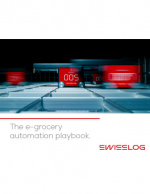Using Modeling to Optimize Distribution Center Automation
Mathematical modeling is used to create realistic, data-supported warehouse designs that build confidence in MHE system expectations and sizing recommendations.
The engineers who design distribution centers (DCs) and the architects who design churches and synagogues have more in common than you might think.
In Christian congregations, attendance mushrooms for services on Christmas and Easter. The largest attendance at Jewish synagogues occurs on Rosh Hashanah and Yom Kippur. If architects based their plans on these peaks, these organizations would invest in square footage, seating and equipment that went unused most of the year.
To right-size their designs, smart architects analyze average weekly attendance and factor in extra space based on careful estimates of how many people will join the congregation. This ensures that everyone who attends services during 50 weeks of the year can be accommodated.
During the two weeks of peak attendance, extra services can be scheduled or special arrangements can be made for overŸow seating.
This same principle applies to warehouses and the material handling equipment (MHE) they house: plans must be made for peak capacities but designing for those capacities can result in unused resources during much of the year. It’s important to follow best practices to ensure that all the equipment, software, and distribution processes — including manual, semi-automated and automated — work together as a unified system to anticipate and respond to peaks and lulls in workflow.
By analyzing the goals of the material handling process and aligning them to industry guidelines, a properly designed warehouse will improve customer service, reduce inventory, shorten delivery time, and lower overall handling costs in manufacturing, distribution and transportation.
The mathematical model, based on current and historical data, enables business leaders and their design consultants to envision how the DC should work, and documents that the MHE and software selected provide an effcient and cost-effective solution.
What’s Related




Favorites





